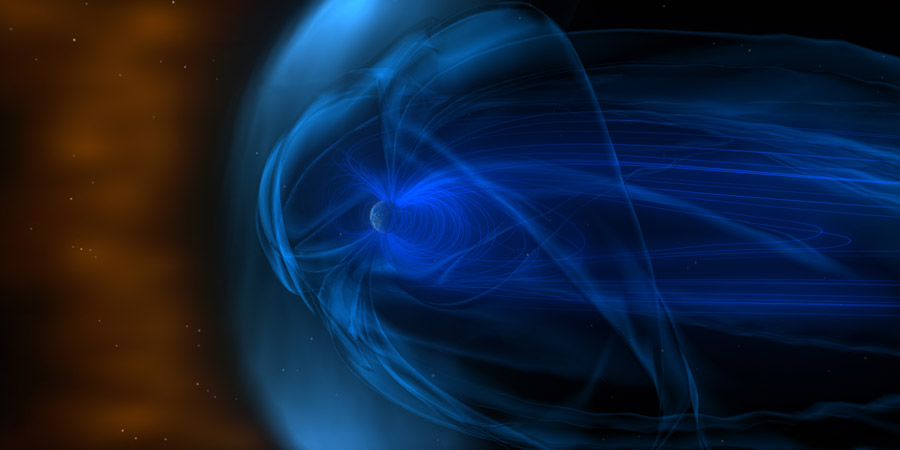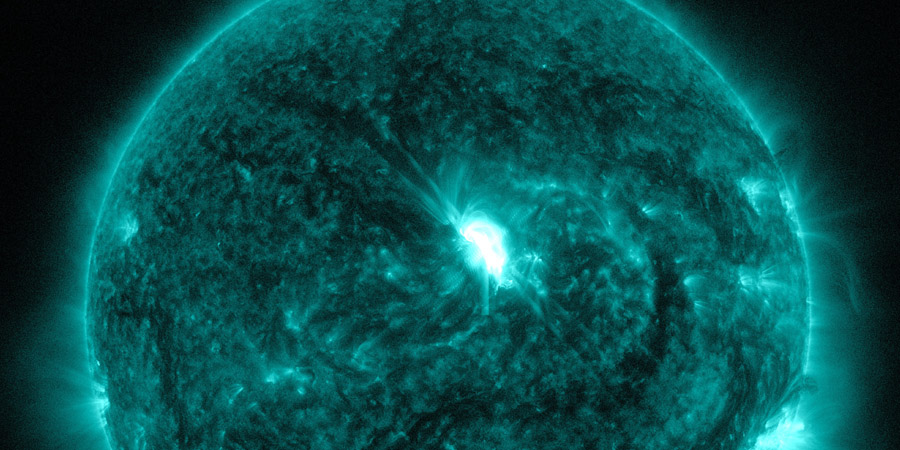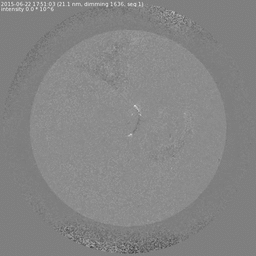Coronal mass ejection arrival, M6.6 solar flare
Monday, 22 June 2015 19:15 UTC

A short update on the most recent events. The full halo coronal mass ejection from yesterday has arrived at Earth. We also had a long duration M6.6 solar flare from sunspot region 2371 which is now at the center of the earth-facing solar disk.
Coronal mass ejection arrival
The coronal mass ejection from yesterday's M2/M2.6 solar flare has arrived at Earth and we can speak of a strong impact, the solar wind jumped to 700km/s with a moderate density of 20p/cm3. It is however the IMF that is showing us the true significance of this impact. The total strength of the IMF lies at 38nT and is now directed (Bz) south at almost -37nT. We can pretty much guarantee that a strong G3 geomagnetic storm will develop in the coming hours with a solid chance that we reach the severe G4 geomagnetic threshold. Aurora at middle latitudes is likely with displays being possible as far south as London, Brussels and Berlin. Keep following the data on our website. Remember that you need total darkness and clear skies to see aurora so locations with the midnight Sun can not see aurora right now!
The high energy protons also reached the strong S3 level following the impact. Effects are: Degraded HF radio at polar regions and navigation position errors, satellite effects on imaging systems and solar panel currents, significant radiation hazard to astronauts on extra-vehicular activity (EVA) and high-latitude aircraft passengers.
M6.6 solar flare

At the same time as the coronal mass ejection arrived, sunspot region 2371 surprises us yet again with a strong M6.6 solar flare (R2) that peaked at 18:23 UTC. SDO imagery show coronal dimming and it is likely that this sunspot region again launched a coronal mass ejection towards Earth. More information will of course be provided later.

Image: SDO imagery showing coronal dimming and a large scale coronal propagating wave, signs that this solar flare also launched a coronal mass ejection.
Thank you for reading this article! Did you have any trouble with the technical terms used in this article? Our help section is the place to be where you can find in-depth articles, a FAQ and a list with common abbreviations. Still puzzled? Just post on our forum where we will help you the best we can!
Latest news
Latest forum messages
Support SpaceWeatherLive.com!
A lot of people come to SpaceWeatherLive to follow the Sun's activity or if there is aurora to be seen, but with more traffic comes higher server costs. Consider a donation if you enjoy SpaceWeatherLive so we can keep the website online!

Space weather facts
| Last X-flare | 2024/12/08 | X2.2 |
| Last M-flare | 2024/12/25 | M4.9 |
| Last geomagnetic storm | 2024/12/17 | Kp5+ (G1) |
| Spotless days | |
|---|---|
| Last spotless day | 2022/06/08 |
| Monthly mean Sunspot Number | |
|---|---|
| November 2024 | 152.5 -13.9 |
| December 2024 | 115.2 -37.3 |
| Last 30 days | 120.1 -38.2 |


